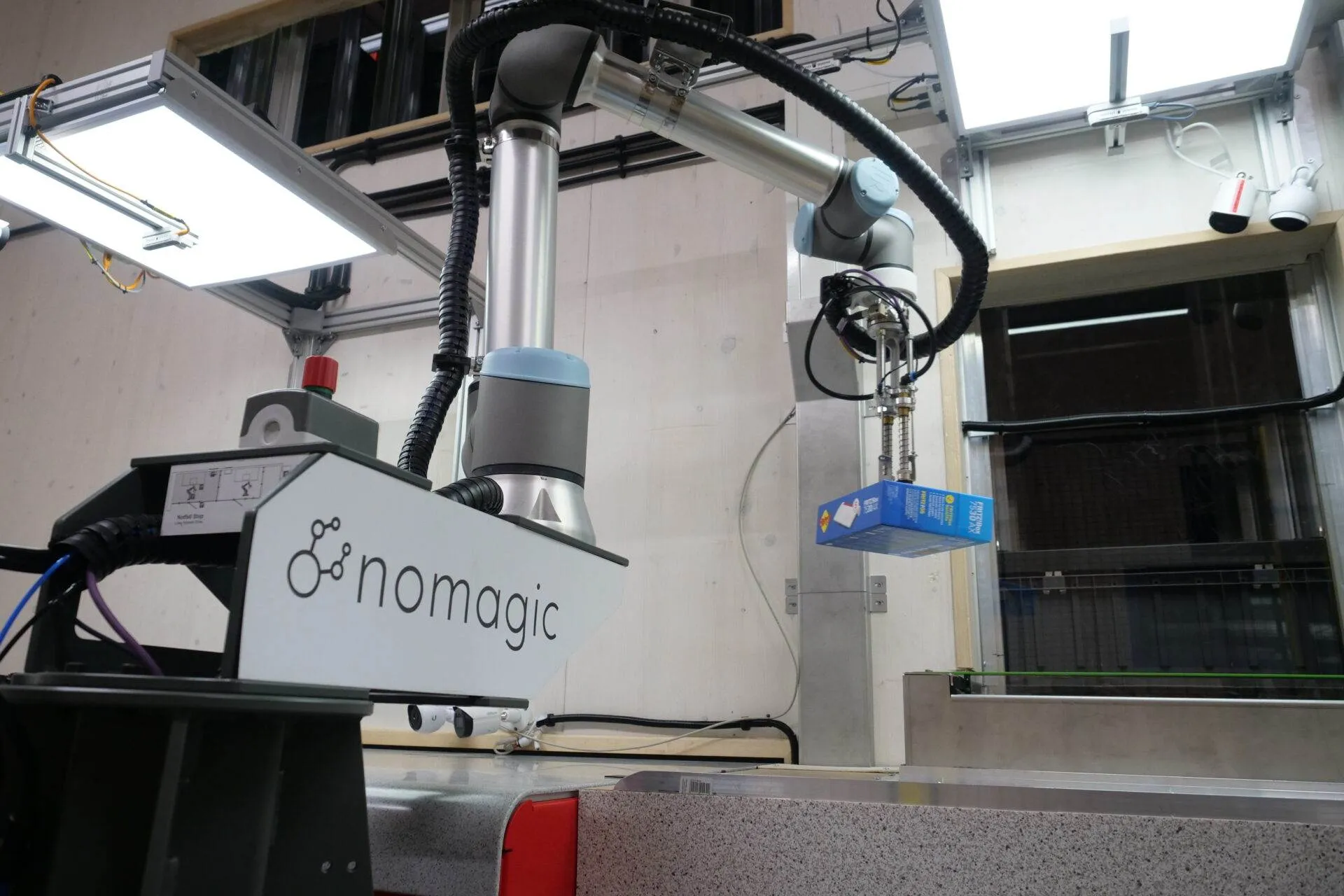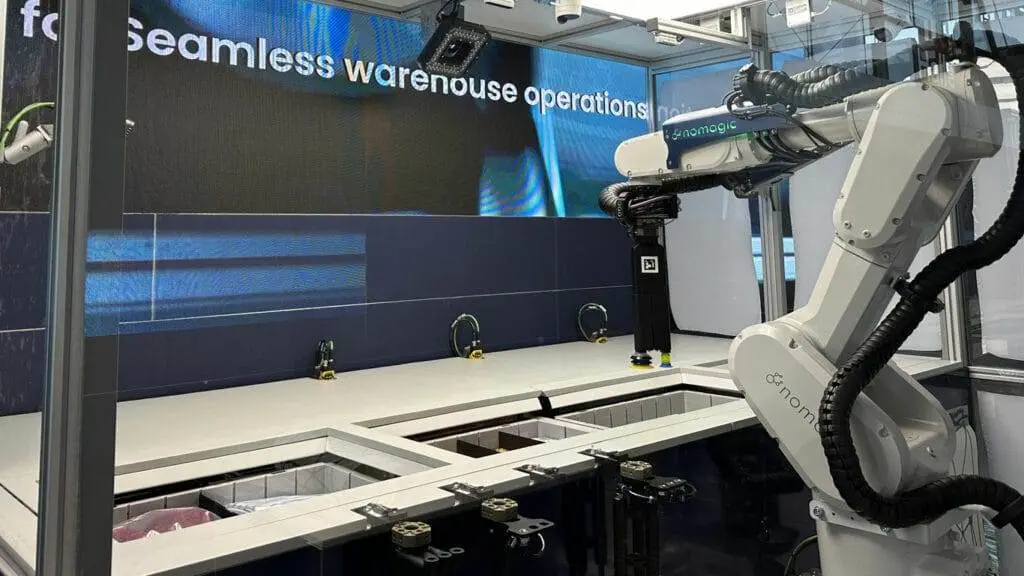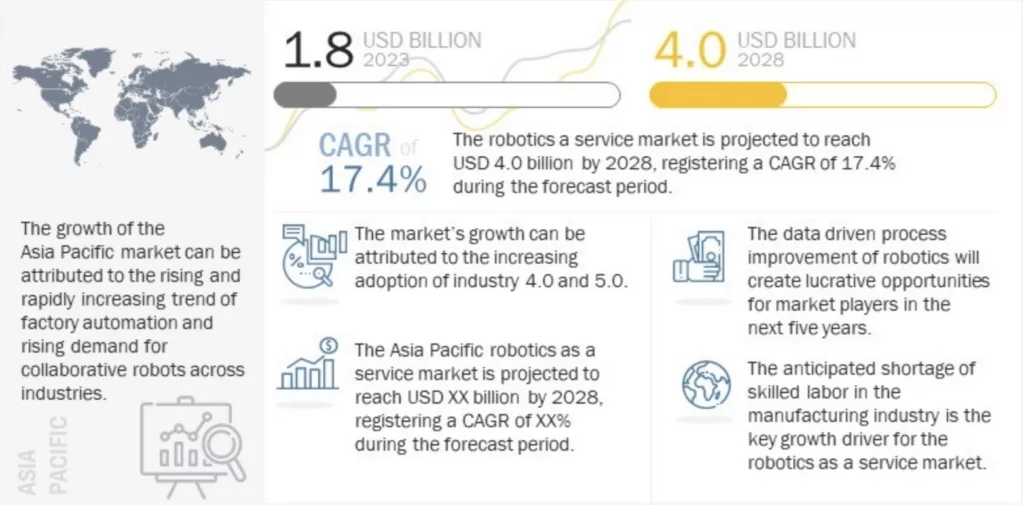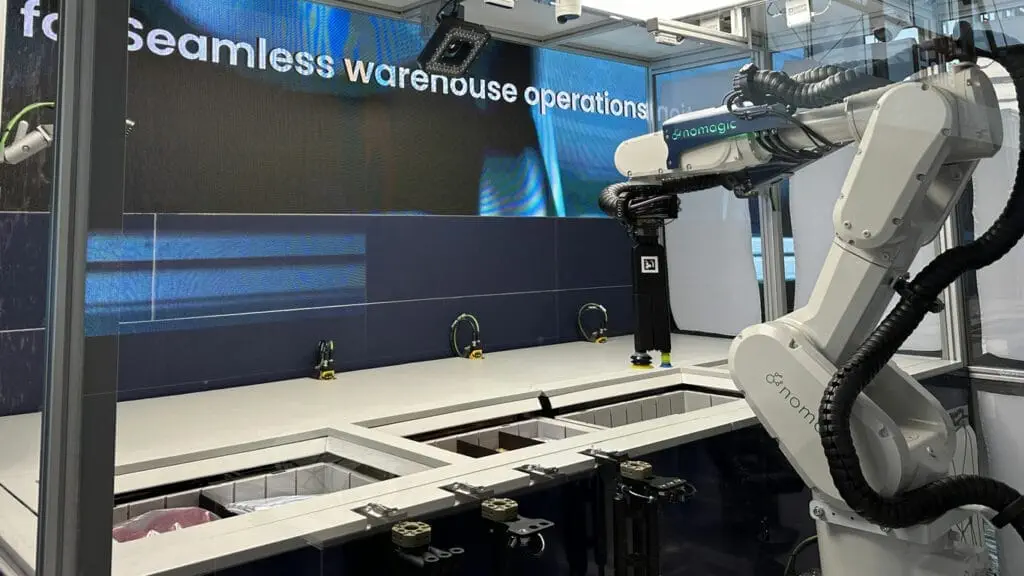

In recent years, Robotics as a Service (RaaS) has emerged as a transformative model, reshaping how businesses adopt advanced automation solutions. This subscription-based approach moves beyond traditional transactional methods, fostering strategic partnerships that redefine how organisations meet their automation needs.
At the heart of RaaS is the elimination of the upfront investment traditionally associated with robotic technologies. Much like the widely recognised SaaS (Software as a Service) model, RaaS enables companies to explore automation solutions with far greater flexibility and ease.
According to a report by MarketsandMarkets, the global Robotics as a Service (RaaS) market was valued at $1.8 billion in 2023 and is projected to reach $4 billion by 2028, reflecting an impressive compound annual growth rate (CAGR) of 17.4%. While logistics and handling applications are playing a leading role in driving this growth, the figures underline the widespread adoption of RaaS across industries, cementing its importance in the future of automation.

In healthcare, Xenex Disinfection Services leverages RaaS to deploy germ-zapping robots, achieving a 50% reduction in healthcare-associated infections. This showcases the critical role of RaaS in ensuring safety and hygiene in high-stakes environments.
Similarly, Boston Dynamics offers RaaS for its highly versatile robotic dog, Spot, which has been utilised in the construction and oil & gas industries. Spot’s deployment highlights the adaptability of subscription-based robotics in challenging and dynamic work environments.
RaaS is clearly making a significant impact across multiple industries, proving just how versatile and effective subscription-based robotic solutions can be. In the field of intralogistics, in particular, RaaS is becoming a driving force for automation, breaking away from traditional warehouse routines.

For example, Amazon Robotics, a pioneer in this space, has adopted RaaS for its robotic fulfilment centres. This strategic move has led to a 20% increase in order fulfilment efficiency, demonstrating the tangible benefits of RaaS in improving operational speed and accuracy.
In Europe, Nomagic is leading the charge by driving RaaS solutions for AutoStore systems. With a strong commitment to a comprehensive, end-to-end service model, Nomagic enables companies to seamlessly integrate robotic automation into their warehouse operations. Whether for use cases like pick-and-pack or pocket sorting, Nomagic offers tailored solutions that simplify automation and maximise efficiency.
See an AI driven Robot in Picking action here
Focusing on the world of warehousing, one of the most pressing challenges is the growing shortage of labour. Each year, it becomes increasingly difficult to find and retain skilled workers willing to perform monotonous pick-and-place tasks over long periods.
This is where Robotics as a Service (RaaS) steps in.
Rather than making substantial capital expenditures (CapEx) to purchase and maintain robotic systems, businesses can now opt for a subscription-based model. Think of it as leasing robots on demand, paying only for what you use.
The most significant advantage of RaaS lies in the empowerment it provides to operational managers. By removing the need for complex financial decision-making, managers can focus on the operational benefits of automation. They no longer need to convince senior management to approve a major investment. Instead, they can focus on selecting the best automation solution to improve efficiency and ensure the longevity of their operations.
RaaS paves the way for smoother adoption of automation, with fewer obstacles and more streamlined decision-making. It’s a win-win scenario: reduced friction, increased efficiency, and a workforce freed up to focus on tasks that truly require human expertise.
Find out more about the technology changing the world of fulfillment here
Robotics as a Service (RaaS) is experiencing rapid global growth, with the market expected to expand significantly by 2028.
RaaS is particularly suited to intralogistics, revolutionising how companies manage internal logistics and handling processes.
By offering a subscription-based model, RaaS removes financial barriers, shifting automation decisions from financial constraints to operational priorities. This reduction in friction enables smoother integration and operational efficiency gains.
Get in touch with Nomagic to see how our innovative technology can take your fulfillment processes to the next level.